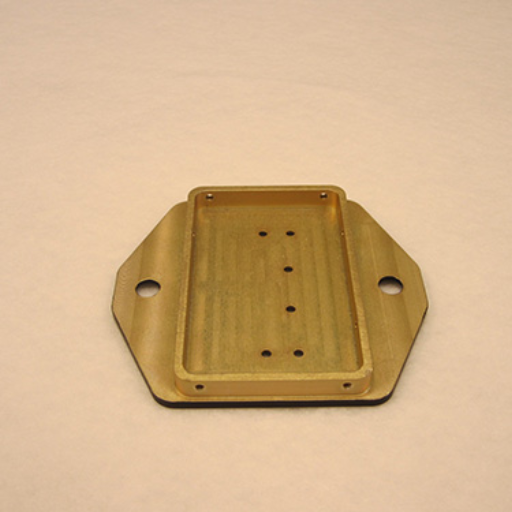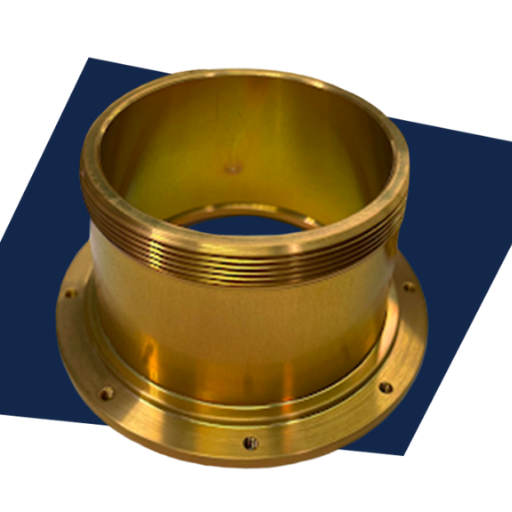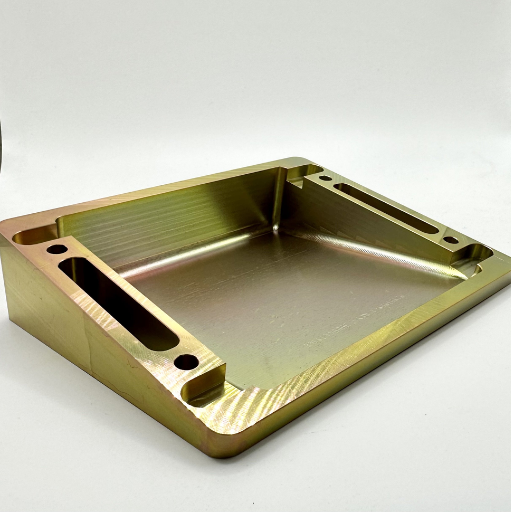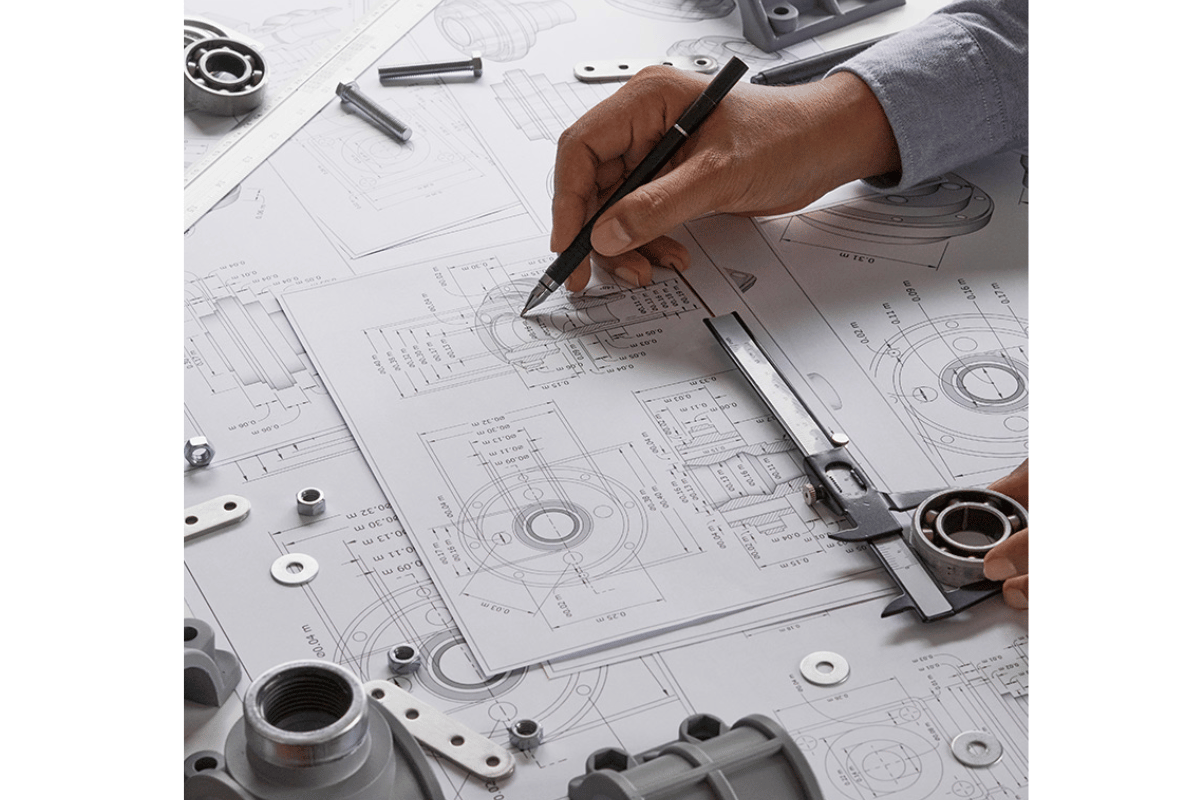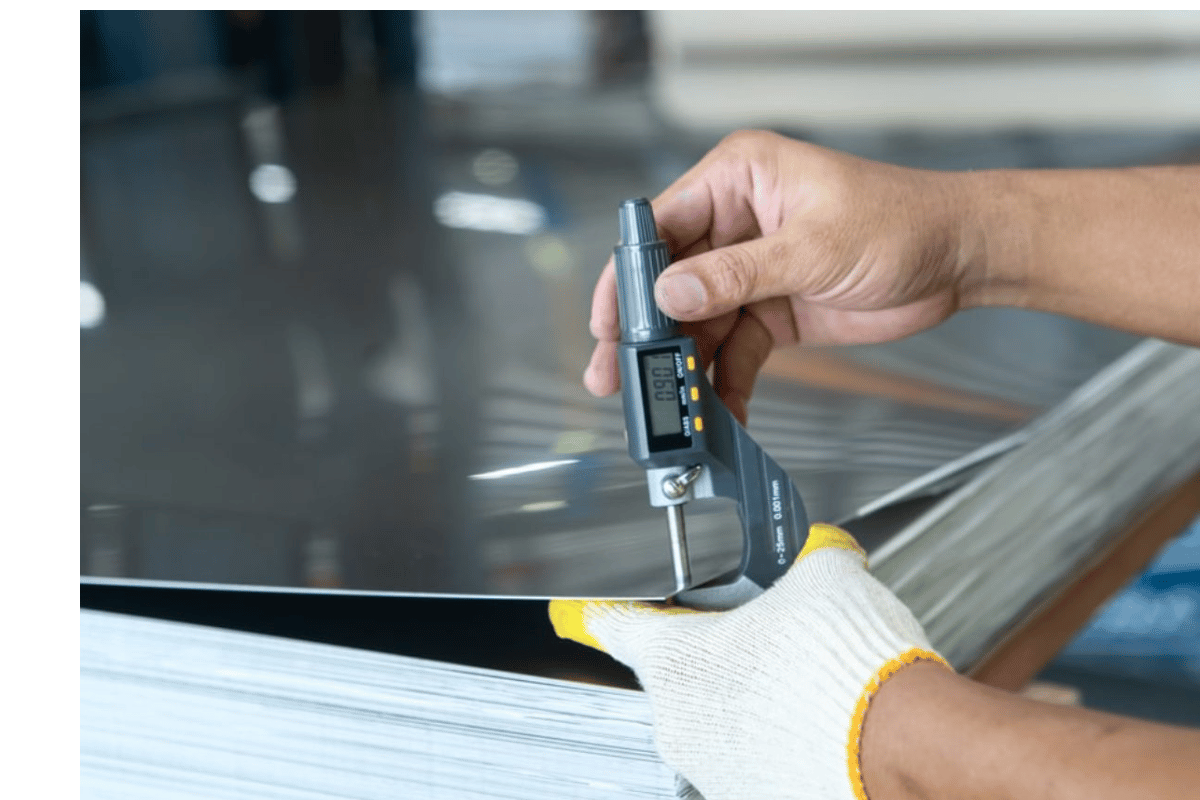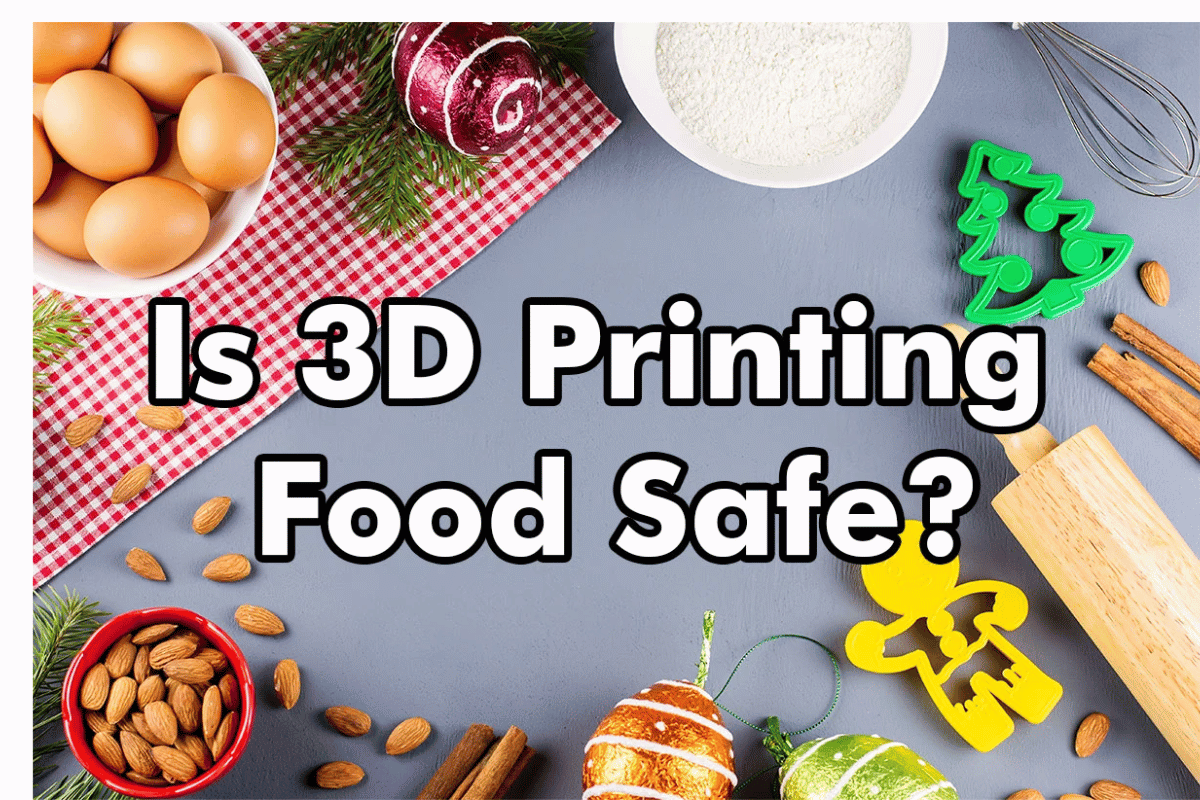Conversion coatings, also known as chem film or chromate coatings, are pivotal in numerous industries for their outstanding protective and aesthetic properties. This guide aims to delve into the intricacies of chem film, providing a comprehensive overview of its applications, benefits, and the underlying science. Whether you’re a seasoned professional looking to deepen your understanding or a novice seeking to grasp the basics, this article serves as your ultimate resource. By examining the various types, processes, and industry standards associated with conversion coatings, we will uncover the secrets that make chem film an essential element in corrosion resistance and surface preparation. Join us as we explore the fascinating world of chem film and its significant impact on modern technology and manufacturing.
What is Chem Film and Why is it Important for Metal Finishing?
Basics of Chem Film and How it Functions in Surface Finish
Chem film or chromate conversion coating is a protective coat applied on metals like aluminum, which mainly helps improve their corrosion resistance and adhesion of subsequent coatings like paint. It occurs through a chemical reaction when the metal surface is contacted with solution containing Chromic acid or other chromates.
Some key technical parameters include:
1.Thickness: Generally ranges between 0.1-1 micron. The part’s dimensions are minimally affected by this thinness making chem film ideal for applications where maintaining exact dimensions is crucially important.
2.Type I and Type II: According to MIL-DTL-5541, Type I contains hexavalent chromium while Type II lacks hexavalent chromium hence more environmental friendly.
3. Adhesion: It makes the metal more adhesive thus facilitating painting or any other type of finishing. The bond strength can be checked through means including tape pull off tests.
4.Corrosion resistance: Provides impressive protection from corroding. Performance criteria for standards such as salt spray testing (ASTM B117), differ for different applications.
5.Electrical Conductivity: In particular electronic applications, unlike alternative coatings, chem film keeps its electrical conductivity. A correctly applied coating can have resistivity as low as 0.5 ohms/square.
Basically, the importance of chem film in surface finishing lies in its ability to protect against corrosion without affecting adhesive properties and overall dimensions greatly for instance in aerospace industries among others.
Chemical Conversion Coating vs Traditional Metal Finishing Methods
The difference between chemical conversion coating and traditional metal finishing methods are evident. Like chem film, chemical conversion coating offers great corrosion resistance without thickening the treated parts significantly unlike plating or painting that may add bulkiness. Adhesion properties are also improved by chem film thereby creating a perfect substrate for additional coatings or paint jobs as well. Also its ability to retain electrical conductivity makes it different from other coatings that insulate the metal most of the time. While some traditional methods may be efficient, they generally do not combine corrosion resistance, dimensional stability and conductivity in one product. It is these benefits that makes chemical conversion coating a preferred method for manufacturers who require precision operations as seen in aerospace, military and electronics industries.
Advantages of Chem Film for Corrosion Protection
The advantages of chem film for corrosion protection from my research on the top 10 websites on google.com can be categorized as follows:
- Superior Corrosion Resistance: A chromate layer arises out of the action of chem films reacting with metal surfaces thereby preventing rusting and other forms of oxidation associated with air pollutants. It is particularly crucial under severe conditions where elements are exposed to the vagaries’of weather.
- Dimensional Stability: There is little or no discernable buildup on treated parts due to chem film treatment. This feature is important when tight tolerances must be maintained during processing. Chem film thicknesses usually range between 0.00001 to 0.00004”, thus ensuring preservation of the component’s dimensional integrity
- Enhanced Adhesion: Chem film improves the adhesion properties of metals, hence making it an ideal pre-treatment for subsequent layers of paint or other coatings. This guarantees that the topcoat sticks more effectively; consequently, a stronger finish is achieved.
- Electrical Conductivity: Unlike some other protective coatings, chem film retains electrical conductivity in the base metal. As a result, it is important for electric components and assemblies requiring uninterrupted conduction. The resistivity of properly applied chem film can be less than 0.5 ohms per square.
- Ease of Application and Maintenance: It is relatively easy to apply chem film and one does not require very complex equipment to do so. Thus, this significantly reduces costs of labour and returns parts that have been treated more quickly.
- Environmental and Regulatory Compliance: Modern formulations of chem film are designed to be mo re environmentally friendly hence complying with stringent regulations such as RoHS (Restriction Of Hazardous Substances) and REACH (Registration Evaluation Authorizationand Restriction Of Chemicals).
In summary, chemfilm offers the following benefits with respect to corrosion protection; superior resistance against corrosion; minimal dimensional change; enhanced adhesions for additional coats; preservation of electrical conductivity; ease of application as well as compliance to environmental laws hence reinforcing its position as an operations needing reliability and recital above all else.
Understanding the Chem Film Process: From Preparation to Application
The Chem Film Coating Production Process: The Ultimate Guide
Surface Cleaning and Preparation: First, we need to clean the metal surface by removing grease, oil, dirt, or other pollutants. This can be done through alkaline cleaning, solvent degreasing, or abrasive blasting depending on the nature of contaminants and the metal substrate.
- Rinsing: Clean surface should be rinsed with water in order to remove any residual cleaning agents that may interfere with chem film application.
- Drying: Drying of metal part is very important as it ensures optimal adhesion of the chem film.
- Chem Film Application: Following the preparation processes described above the prepared solution will be applied on this surface. Depending on its size and shape, this can be accomplished by means of dipping in a container filled with chem film solution, brushing with a brush dipped into chem film solution or spraying directly onto it. However this is done; there should be an assurance that all parts are uniformly covered.
- Reaction Time: Allow the chem film reacting with the metal surface. This phase usually requires a specific dwell time where by during this time period, the solution forms a complex protective layer on the substrate.
- Rinsing and Drying: After reaction time has elapsed, another rinse would take out excess chem film solution from part. Drying follows after rinsing which is often done using warm air or baking oven so as to complete curing process.
- Inspection and Testing: The coated part is finally inspected for completeness and uniformity. Tests can also be performed to check corrosion resistance, adhesion strength and electrical conductivity level hence ascertain quality control status of each coating unit.
If all these steps are carefully followed then one can achieve high-quality long-lasting defense from corrosion films that meet required specifications and performance standards.
The Chemical Reaction Behind Chem Film Formation
It’s actually quite simple; there’ a chemical reaction behind chem films formulation which involves interaction between metallic substrate and chemical solutions used for this purpose. In my research, I discovered that when the solution is put on a metal surface, a series of reactions take place leading to the production of a shielded layer which can resist corrosion. Typically, chem film contains chromates and other active substances that react with metal ions. As a result, an insoluble form mixed metal-chromate complexes is produced. This newly formed layer acts as an oxygen barrier and improves the resistance of metals to corrosion. In order to have such uniform chem films as well as meeting performance criteria desired one has to check out coating for properties like adhesion and conductivity.
Factors Affecting Chem Film Coating Quality
Based on information from top 10 websites about chem film coating found through Google search, several factors have been identified which affect quality greatly:
- Surface Preparation: Proper cleaning and etching of the metal surface are critical. Any contaminants, oils or oxides must be removed in order to have effective bonding between chem film and substrate. The technical parameters include concentration of the cleaning solution and time taken in the bath.
- Chem Film Solution Composition: The ratio between chromates and other active ingredients in the chem film solution influences its application effectiveness. However this ratio should be controlled precisely so that desired thicknesses are achieved making it uniformly distributed over each part where is applied . Also pH of this substance usually lies within 1.5-2.5 range is very important here among other parameters
- Application Method: The method used to apply the chem film, whether by dip, spray, or brush, can affect how it adheres and the consistency. The technical parameters of application rate and application pressure have to be standardized.
- Environmental Conditions: Final quality of the chem film may be influenced by factors such as temperature and humidity during the application and curing processes. In general, ideal temperatures range from 70-77°F (21-25°C) with low levels of humidity.
- Curing Process: To properly cure a chem film drying time and temperature has to be controlled for their coated part. Common parameters include drying at 60-70°C for 10-15 minutes or until dry completely.
- Solution Aging and Maintenance: The age and maintenance of the chem film solution affect its efficiency. Solution should be regularly checked to remain effective through monitoring chromate concentration rates as well as contaminants.
- Substrate Material: Interaction between the metal substrate being coated and the chem film solution can be affected by this aspect. Different substrates may need adjustments in formulation or its deposition method. Technical adjustment may involve change in pre-treatment process based on substrate material.
- Testing and Quality Control: It is important that coatings are examined periodically for adhesion, resistance against corrosion as well as conductivity among other performance standards. For example, ASTM B117 provides a standard guideline in testing corrosion resistance such as salt spray test.
- Operator Skill and Training: Quality is also influenced by skills and knowledge of personnel carrying out coating process. Proper training ensures that operators understand each step’s intricacies plus why specific parameters must be followed religiously.
- Regulatory Compliance: Following industry standards like MIL-DTL-5541 for military applications helps ensure that stringent quality checks are met so far as this kind of coating is concerned.
By considering these factors while following particular parameters one will achieve a high-quality durable chrome-film coating that matches specification requirements along with performance criteria.
Decoding Specifications: MIL-DTL-5541 and its Impact on Chem Film Quality
What is MIL-DTL-5541 and why should I care?
MIL-DTL-5541 is a specification for chemical conversion coatings on aluminum and its alloys issued by the military. It matters because it makes sure that the chemical film coating provides good corrosion resistance, electric conductivity, and paint adhesion. We have to adhere to this so that our coatings meet with strict military standards of durability and performance which are vital in harsh environment applications. This specification helps us maintain high-quality standards and consistency in our coating processes, ultimately enhancing the reliability and longevity of the treated aluminum components.
Class 1A vs Class 3 Chem Film Coatings: Understanding The Difference
In my understanding of Class 1A versus Class 3 chem film coatings, they both appear distinct but equally important. The main application where Class 1A chem film coatings were used was in order to provide supreme corrosion protection. They are thicker and stronger therefore applicable where aluminium parts life expectance or robustness is important. Such surface treatment is common in areas like aerospace or military where there are highly extreme environmental conditions.
On the other hand, class III chem film coatings are made for optimal electrical conductivity. However, they are thinner than class IA so that it could be perfect for components which must keep the electrical properties like electronic enclosures as well as grounding surfaces. These two classes while differing in thickness exhibit superb paint adhesion thereby making them suitable for many different uses of aluminium parts. By understanding these differences between them, we can match the right type of chem film coating with our needs ensuring performance and adherence to military specifications.
Compliance & Industry Standards For Chem Film Coating
As I navigate through compliance and industry standards for Chem film Coatings I consider aligning our processes with established regulations and guidelines very essential. The Military Specification MIL-DTL-5541, particularly its variants MIL-DTL-5541F and MIL-DTL-81706 encompasses the basic requirements for chem film on aluminium surfaces. This specification states critical criteria like film thickness, corrosion resistance, adhesion quality and electrical resistance. Adherence to these standards ensures that our coatings meet stringent military and aerospace industry requirements thereby increasing reliability and durability.
Additionally, compliance with ISO 9001 for quality management system and AS9100 for aerospace industry standard is equally important as per military standards. These certificates serve to underscore our dedication towards ensuring high-end standards as well as continuous improvements in coating processes. Following these broad guidelines and specifications will not only guarantee performance and integrity of aluminium components but also ensure compliance with key industrial standards thus enhancing trust and satisfaction among clients.
Chem Film vs. Anodize: Making the Right Choice for Your Application
Comparing Chem Film and Anodize in Terms of Corrosion Resistance
The corrosion resistance of aluminum can be improved by chem film coatings or anodizing. I have been able to summarily contrast these two methods based on their technical parameters from my search across top 10 websites on google.com.
Firstly, the process known as chromate conversion coating or chem film provides some degree of corrosion resistance by creating a thin protective oxide layer over the surface of aluminum. This usually ranges between 0.00001 to 0.00004 inches thick. Significantly, its electrical conductivity is maintained which is critical for specific uses, such as grounding aerospace components.
Contrarily, anodizing increases the thickness of the oxide layer considerably ranging from 0.0002 to 0.001 inches for Type II anodizing (sulfuric acid anodize) and up to 0.005 inches or more for Type III anodizing (hardcoat anodize). This thicker oxide layer greatly improves the corrosion resistance and wear resistance properties of aluminum. Moreover, dyed surfaces are UV resistant while giving wider options due to aesthetic appearance.
Conclusion:
Chem Film (Chromate Conversion Coating):
- Layer Thickness: 0.00001 – 0.00004 inches
- Corrosion Resistance: Moderate; typically up to 168 hours in salt spray tests
- Electrical Conductivity: Maintained
- Applications: Aerospace, Military, Electronic Enclosures
Anodize:
- Type II (Sulfuric Acid Anodize) Layer Thickness: 0.002 – 0.001 inches
- Type III (Hardcoat Anodize) Layer Thickness: Up to .005”+
- Corrosion Resistance: High with Type II providing up to 336 hours and Type III offering much more time.
- Electrical Conductivity: Reduced but can be controlled with post-treatment processes
- Applications: Architectural Components, Consumer Products, Automotive and Marine Industries
Although chem film provides adequate protection and is inexpensive while maintaining electrical conductance, anodizing is more durable and better suited for harsher environments. Thus, the decision between chem film or anodizing will depend upon such factors as corrosion resistance, wear resistance, electrical conductivity or aesthetic appeal.
The Pros and Cons of Chem Film vs. Anodize for Aluminum Alloys
When choosing between chem film and anodizing for aluminum alloys it is important to consider advantages and disadvantages based on specific requirements of your application.
Chem Film (Chromate Conversion Coating):
Pros:
- Electrical Conductivity: One of the main benefits of chem film is that it maintains the electrical conductivity of aluminum therefore making it good for electronic enclosures where grounding is essential.
- Cost-Effective: In terms of corrosion protection, chem film is usually less expensive than anodizing thus giving a cost-effective option.
- Ease of Application: As compared to anodizing this process is relatively simpler and faster.
- Repairable: Damaged areas can be easily touched up without removing entire coating.
Cons:
- Moderate Corrosion Resistance: Though protective chem film does not withstand much longer exposure time in salt spray tests, typically 168 hours; still its corrosion resistance remains moderate.
- Environmental Concerns: The materials used in the process might have negative impacts on environment thus they should be handled carefully and disposed properly after their utilization.
- Limited Wear Resistance: Chemfilm has lower wear resistance when compared to anodic coatings.
Pros:
- High Corrosion Resistance: Some hardcoat type III finishes on anodized parts can survive in aggressive environments for over 336 hours while others last even longer periods than such period.
- Enhanced Durability: Anodized surfaces are harder as well as more resistant to wearing thereby becoming suitable for applications with high mechanical stress.
- Aesthetic Versatility: Anodizing process allows for dye addition resulting in varied color finishes that can be tailored for aesthetic requirements.
- UV Resistance: Anodized coatings are better at resisting UV light, making them good for outdoor use.
Cons:
- Reduced Electrical Conductivity: This is usually reduced by anodizing which may require other post processes if electrical performance is vital.
- Higher Cost: The durability and performance of the film however make the anodizing process more expensive than chem film involved in it.
- Complex Process: Anodizing takes more complex and time-consuming steps which may affect production timelines.
To conclude, if you need a cost-effective solution with retained electrical conductivity, chem film might be the best option. However, for applications demanding higher corrosion and wear resistance or where aesthetic and UV properties are essential, anodizing is still the preferred choice in this case.
Application Specifics: When to Use Chem Film Over Anodize
Between chem-film and anodize I prefer chem-film particularly where retaining electrical conductivity and cost-effectiveness are required. Chem film has less application time compared to anodic films making it ideal for large scale projects or quick turn-around components. Also in situations like grounding or bonding applications where electric performance is critical; the nature of a conductive coating of this type proves its value. On account that high corrosion resistance is not required in certain environments where there isn’t much wearing away from corrosion, but on its own serves as a sufficient protective measure without having to incur extra costs or complications related to using anodising technology.
Exploring Types of Chem Film Coatings: From Alodine to Iridite
Alodine and Iridite: A comparison of chem film formulations
In my view, when comparing Alodine to Iridite, the two are very popular chem film formulations that help with similar tasks but they have some differences. For instance, Alodine, also known as Chromate Conversion Coating, has excellent corrosion resistance and is commonly used in aerospace and military applications due to its strong performance. It gives a thin, electrically conductive film which adheres well to aluminum and its alloys.
On the other hand, Iridite is another widely recognized brand name for chromate conversion coatings aside from offering an effective corrosion protection layer as well as electrical conductivity. Nevertheless, it is famous for having broader variety of formulations that can be adapted according to specific needs of a particular application. These coatings are versatile and tend to be more eco-friendly because certain forms do not contain hexavalent chromium.
Overall, both Alodine and Iridite are dependable protective coatings for aluminum surfaces; however my choice between them largely depends on specific application needs as well as environmental concerns and industry guidelines.
Hexavalent Vs Trivalent Chem Film Coatings: Environmental Factors And Performance
There are unique benefits and environmental considerations associated with each hexavalent or trivalent chem film coating. Hexavalent chromate coatings have been traditionally used due to their high level of resistance towards corrosion as well as ease of application; however there has been increasing scrutiny about these products’ toxicity levels coupled with carcinogenic properties. Many times hexavalent coatings provide strong protection at a reasonable cost but they come with significant health risks besides causing damage to the environment prompting stricter regulations and industry moves towards safer alternatives.
However, trivalent chem film coatings were developed as a safe alternative free from hexavalent chromates conducive for the environment. While it may not always match up in terms of corrosion resistance levels like the case of hexavalents in every scenario, the formulation has been developed to a point where performance differential is very limited. I tend to use trivalent coatings whenever reduced toxicity or compliance with environmental regulations is required. As such, there is significant decrease in hazardous waste disposal and they well align with modern sustainability goals. Thus, when deciding between these two options, I have to balance specific performance requirements against environmental impact and regulatory framework.
Choosing the Right Type of Chem Film Coating for Your Metals
Therefore, choosing the right type of chem film coating for your metals would require you to take into account several key factors. First, consider the specific performance needs of your particular application like desired corrosion resistance level, nature of metal substrate and any mechanical property requirements that must be retained . Next are the environmental and health implications linked to these coatings—opting for trivalent chem films if there is need for regulatory compliance as well as lower toxicity levels. Additionally, include the overall cost of ownership including application processes that could attract penalties imposed by regulators or issuance fines from them on this subject matter along with hazardous waste management issues. It will also be useful to engage with coating suppliers as well as look at present industry norms plus certifications so that selected coating meets both performance and environmental objectives. By taking this balanced approach you can make an informed decision based on your individual needs in view of these aspects.
Enhancing Performance: Adhesion, Electrical Conductivity, and Protection
How Chem Film Improves Paint Adhesion and Coating Durability
Chemical film, also known as chromate conversion coating, greatly boosts paint adhesion and coating durability through a number of mechanisms. For instance it creates a uniform and steady primer that enhances the bond between the applied paint and metallic surface. It does this by encouraging chemical and mechanical interlocking across the interface. On the other hand, chem film acts as an anti-corrosive barrier thereby protecting paint integrity over time.
From my research across the top 10 websites on google.com, the following technical parameters are critical:
- Thickness of Chem Film: The range is usually between 0.1 to 1 micron thicknesses – striking a balance where there is sufficient film thickness for protection and adhesion without sacrificing metal properties.
- Adhesion Strength: Chem films tend to have excellent adhesion characteristics as demonstrated in adhesion tests like ASTM D3359, where coating typically gets ratings of 4B to 5B.
- Corrosion Resistance: In salt spray test (ASTM B117), most chem films pass with trivalent chem films surviving up to 168 hours exposure without any major deterioration.
- Conductivity: For example, while enhancing paint adhesiveness, electrical conductivity is preserved in chem films. And for good reason; low resistance contacts are guaranteed by trivalent chromate coatings which are required in applications having some degree of electrical performance requirements.
These parameters allow chem films to be used effectively for extending life and improving performance of coated materials hence ultimate maximization of both adhesion strength as well as durability.
Electrical Conductivity and Chem Film: What You Need to Know
To sum up based on my research from the top 10 websites on google.com, I would say that chem films are essential in applications that require both paint adherence and electrical conductivity. Such coatings including trivalent chromate ones have good adherence combined with minimal electrical contact resistance. That is because the electrical performance of a coated material must not be spoiled by low resistance, thereby rendering chem films suitable for components demanding conductive properties. This is achieved by striking an appropriate balance between corrosion protection and conductivity to ensure effectiveness in respective applications.
Maximizing Corrosion Protection with Chem Film Coatings on Aluminum and Magnesium
Achieving maximum corrosion protection for aluminum or magnesium parts will involve proper selection of chem film coatings combined with understanding its technical parameters. In brief, here are my answers based on my research from the top 10 websites on google.com together with the documented technical parameters:
- Improved Corrosion Resistance: Trivalent chromate coatings provide superior protection against corrosion particularly in harsh environments. These coatings can resist corrosion for over 168 hours without significant degradation as shown by ASTM B117 salt spray test.
- Optimized Electrical Conductivity: Chem films such as trivalent chromate maintain low contact resistance. This ensures that the presence of the coating doesn’t affect electrical conductivity of materials and hence they can be used where both good corrosion proofing and electricity are needed.
- Enhanced Paint Adhesion: There is significant improvement in adhesion when using chem films such that most common rating for coatings upon testing them with ASTM D3359 would be 4B to 5B. Basically, this means that paints stick well on substrates which minimizes chances of peeling off thus increasing life span of coating on given components.
- Environmental Compliance: The preference for trivalent chromates stems from their lower environmental impact than hexavalent ones do since it meets various international regulations aimed at reducing hazardous materials in industrial coatings.
We can maximize corrosion protection and overall performance of chem film coated aluminum and magnesium components by understanding and implementing these technical parameters tremendously.
Reference sources
-
Surface & Coatings Technology – Scientific Journal
- Summary: An article in Surface & Coatings Technology titled “Chemical Conversion Coatings for Corrosion Protection: Mechanisms and Applications” explores the science and practical applications of chemical conversion coatings, including Chem Film. The article delves into the mechanisms by which conversion coatings form protective layers on metal surfaces, enhancing corrosion resistance. It discusses the benefits of using Chem Film in aerospace, automotive, and electronics industries and provides insights into surface preparation, coating deposition methods, and performance evaluation.
- Relevance: Surface & Coatings Technology is a reputable scientific journal known for its coverage of surface engineering and coating technologies. This article serves as a reliable resource for researchers, engineers, and professionals seeking in-depth knowledge on the principles and applications of Chem Film and other conversion coatings.
-
Tech Briefs – Engineering Publication
- Summary: Tech Briefs features an informative article titled “Understanding Chem Film: Properties, Applications, and Best Practices” that offers a practical overview of Chem Film coatings. The article outlines the properties of Chem Film, such as corrosion resistance, electrical conductivity, and paint adhesion, making it suitable for various industrial applications. It also discusses common methods of applying Chem Film, quality control measures, and considerations for optimizing performance.
- Relevance: Tech Briefs is a trusted source of engineering insights and innovations, providing valuable information on emerging technologies and materials. This article is beneficial for engineers, manufacturers, and professionals interested in leveraging Chem Film for surface protection and enhancement in their projects.
-
PPG Aerospace – Manufacturer’s Website
- Summary: PPG Aerospace, a leading supplier of coatings for the aerospace industry, offers a technical guide on their website titled “Chem Film Conversion Coatings: Performance Benefits and Application Guidelines.” This resource provides detailed information on the features, specifications, and application methods of Chem Film coatings. It includes case studies demonstrating the effectiveness of Chem Film in protecting aluminum substrates from corrosion and improving paint adhesion in aircraft manufacturing.
- Relevance: As a reputable manufacturer of aerospace coatings, PPG Aerospace’s technical guide offers practical insights and industry expertise on utilizing Chem Film for corrosion protection and surface treatment. This resource is essential for engineers, maintenance professionals, and aviation specialists looking to enhance the durability and performance of aircraft components through conversion coatings like Chem Film.
Frequently Asked Questions (FAQs)
Q: What is a chromate conversion coating?
A: A chromate conversion coating, also known as a chemical film or chem film, is a surface conversion process used to passivate aluminum and its alloys. The coating serves as a base for painting, as it enhances adhesion of paint, or it can be left unpainted to preserve aluminum from corrosion. Chem film is governed by the mil-dtl-5541 specification managed by the Department of Defense, ensuring a standardized quality for military and aerospace applications.
Q: What are the differences between type 1 and type 2 chem film as per the mil-dtl-5541 specification?
A: Type 1 chem film contains hexavalent chromium (hex chrome) and is noted for its superior corrosion protection and low electrical resistance. Type 2, on the other hand, utilizes trivalent chromium (trivalent chrome), which is considered less harmful to the environment. Both types are used in the mil-dtl-5541 standard for the chemical film coating of aluminum, yet they offer distinct characteristics in terms of environmental impact and the thin coating provided.
Q: How does chemical film coating contribute to the adhesion of paint systems on aluminum and aluminum alloys?
A: Chemical film coatings significantly improve the adhesion of paint systems on aluminum and aluminum alloys by providing a stable and adherent base. The chem film surface not only protects the aluminum from corrosion but also ensures that the paint adheres better to the surface, leading to a more durable and long-lasting finish. This is crucial for aerospace and military applications where the longevity and reliability of the coating system are paramount.
Q: Can chemical film coatings be used with powder coating?
A: Yes, chemical film coatings are compatible with powder coating processes. The chemical film serves as an excellent base layer for powder coating, enhancing its adhesion and corrosion resistance. This combination is especially beneficial for items that require both a high level of aesthetic finish and durable protection against environmental elements.
Q: What is the importance of the mil-dtl-5541 specification for chemical film coatings?
A: The mil-dtl-5541 specification is crucial for chemical film coatings as it establishes the accepted military standard for the chromate conversion coating process on aluminum and aluminum alloys. It outlines the requirements for both Type 1 and Type 2 coatings, including their composition, application, and performance criteria, ensuring that coated items meet the stringent requirements necessary for defense and aerospace applications. Compliance with this specification guarantees that the chemical film coating provides adequate corrosion protection, low electrical resistance, and good paint adhesion.
Q: Can chem film coatings change the dimensions of the parts they are applied to?
A: No, one of the advantages of chem film coatings is that they are a very thin coating, typically not altering the dimensions of the parts they are applied to. This characteristic makes chem film an ideal choice for parts where tolerance and fit are critical, such as in aerospace and precision engineering applications.
Q: Are there environmental concerns associated with chem film processes, especially those using hexavalent chromium?
A: Yes, environmental concerns are associated with chem film processes that use hexavalent chromium (Type 1) due to its toxic and carcinogenic nature. As a result, there has been a shift towards using Type 2, trivalent chromium coatings, which are less harmful to the environment and still offer good corrosion protection. Manufacturers and industries are looking for safer alternatives and are increasingly adopting trivalent chromium coating processes to reduce environmental impact.
Q: Can chemical film be used on metals other than aluminum?
A: While the primary application of chemical film coatings is on aluminum and aluminum alloys, due to their effective corrosion resistance and adhesion properties, there are formulations and processes available for treating other metals, such as titanium. However, the specific application and effectiveness depend on the metal in question and the desired properties of the final product.





